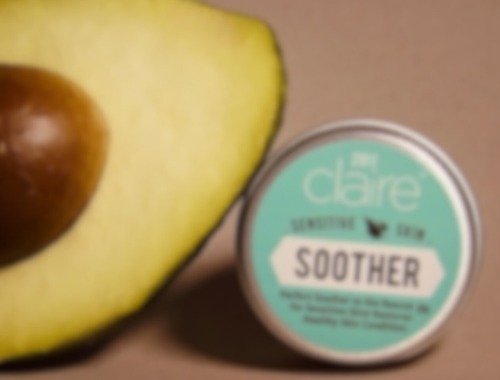Pure Essential Oil
• 10ml/50ml/100ml
• ISO Certified
• 100% imported from Australia
ESSENTIAL OIL PROFILE
Eucalyptus oil is made from leaves of selected eucalyptus tree species. The leaves are dried, crushed, and distilled to release the essential oil. After the oil has been extracted, it must be diluted before it can be used.
AROMATIC PROFILE
- Perfumery Note: Top
- Odor: Camphorous, minty, sharp, pungent, herbaceous, spicy, woody undertone
- Strength of Initial Aroma: Strong
- Blends Well With: herbaceous oils such as thyme oil, rosemary oil, florals like lavender oil, rose geranium oil; wood oils cedarwood oil and sandalwood oil; also melissa oil and lemon oil.
PRODUCT DETAILS
- Botanical Name: Eucalyptus radiata
- Composition: 100% Pure Eucalyptus Essential Oil
- Origin: Australia
- Method of Extraction: Steam Distillation
- Plant Part: Leaves, young twigs
- Color: Clear to pale yellow
100% PURE PROPERTIES
For many years, eucalyptus oil has been used to relieve congestion. Cleansing and penetrating, eucalyptus oil may be used topically, diffused, or in inhalation therapy to support in clearing and energizing tired or overworked bodies. Add a few drops with Carrier Oil as skincare for its cleansing properties.
SUGGESTED USES
Eucalyptus has a cool and crisp fragrance. Diffuse it in your home daily whenever the children are congested or you want to be sure to keep the air fresh and clean. Can be blended with other oils like peppermint and frankincense to increase effectiveness.
CAUTION
Eucalyptus oil is non-toxic, non-irritant, and non-sensitizing. People with high blood pressure and epilepsy should avoid eucalyptus oil. Excessive use of this oil may cause headaches. Do not take eucalyptus essential oil internally. *Always dilute with carrier oil when applying essential oils.

ESSENTIAL OIL HOW-TO
1. DIFFUSE
Put a diffuser by your bed and diffuse oils while you sleep at night or in the family room while you're reading or winding down in the evening. Throughout the day, diffuse for work or study with oils that improves brain power or energy. This is also a good way to add the scent of an essential oil to a room.
2. INHALE
Clear your mind then inhale directly from an open bottle or rub a drop of oil between your palms and breathe in the aroma. Do as needed throughout the day. Several drops of essential oil are placed on a cotton ball or tissue and allowed to evaporate into the air.
3. SKIN APPLICATION
Besides your face and body, the most common places to apply oils are the bottoms of feet, chest, temple and pulse points. Combine 5 to 10 drops with a carrier oil like Jojoba, Avocado or Rosehips oil.
IMPORTANT: Just because it's from a plant doesn't mean it's safe to rub on your skin, or breathe, or eat, even if it's "pure." Natural substances can be irritating or cause allergic reactions. Like anything else you put on your skin, it's best to test a little bit on a small area and see how your skin responds.
4. BATHS
Add 6-10 drops of essential oil to bath water or use with sea salts or Carrier Oil for a soothing bath and moisturised skin.
5. MASSAGE
When you visit the massage centre, it's always a good idea to bring your own favourite oil! Or give yourself a massage at home for a good night sleep. Make your own massage oil by adding 20-25 drops diluted to 1/2 cup of Carrier Oil. Start by massaging the feet as it allows oils to quickly absorb into skin.
6. SPRAY
Add 6-10 drops of essential oil to water in a glass spray bottle, shake well before use. Spray into the air to deodorise a room or set a refreshing mood. You might also want to use a solution of water and your favourite essential oil as a yoga mat cleaner. Always shake well before use.
ESSENTIAL OIL SAFETY TIPS
- This guide is not meant as a substitute for medical advice. Definitely talk to your doctor for any medical condition!
- If you have easily irritated skin, try using essential oils with a carrier oil first. If redness occurs, apply carrier oil to the area to dilute the essential oil.
- Citrus oils can increase sun sensitivity so avoid sun for 12 hours after applying on skin.
- To retain their potency keep essential oils stored away from sunlight and moisture.
- Essential oils are extremely concentrated and can rub off nail polish and even melt plastic.
- Avoid plastic containers for storing essential oils. Stick to glass bottles.
- Oils, and carrier oils, can stain clothing, towels and furniture -so be careful!
- Avoid using metal or plastic utensils or containers to mix or apply essential oils. Stick to glass or ceramic.
- Always consult your doctor before using essential oils if you're on any medication prescription. Your doctor can make sure it's safe for you and rule out any side effects, like affecting your prescriptions.
- Don't use essential oils on a baby unless your pediatrician says it's OK.
- Keep all essential oils locked away out of children's sight and reach.
- Stop using essential oils if you notice a rash, little bumps, boils, or just itchy skin -- take a break, gently wash it off with water.
- Avoid essential oils if you're pregnant, include wormwood, rue, oak moss, Lavandula stoechas, camphor, parsley seed, clary sage, rosemary, and hyssop.
*PRECAUTIONS: Keep out of reach of children. External use only. Avoid contact with eyes.
If pregnant, nursing, taking medication, or have a medical condition, consult your physician.
This product contains naturally derived ingredients, which in rare cases may cause sensitivity in certain individuals. Discontinue or consult doctors if sensitivity or irritation occurs. Skin patch test is highly recommended especially for first time user. Discontinue use if rancidity or discoloration occurs. Store in cool, dry place.*
Customer comments
| Author/Date | Rating | Comment |
|---|




